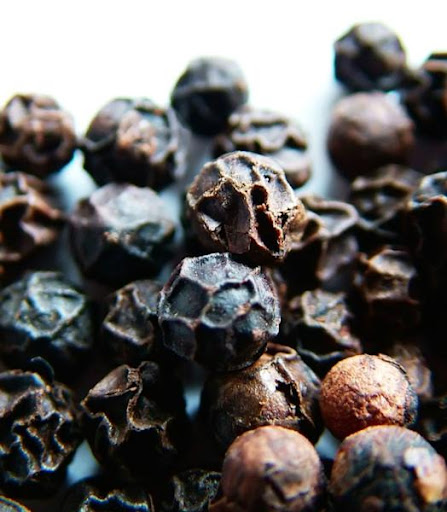Sunday, February 13, 2011
Black Pepper Likely To Ease On Arrivals, Vietnam Currency Devaluation Effect
 Indian pepper futures gained massively during the last week on heavy buying in futures amid lower arrivals in the local markets against the strong demand. Harvesting has been delayed in India due to untimely rains and shifts in climatic pattern. Arrival of fresh pepper normally starts in Kerala from November and extends to March. Normally, during this part of the year arrival pressure from India and Vietnam pressurize the market allowing big buyers to procure large volumes.
Indian pepper futures gained massively during the last week on heavy buying in futures amid lower arrivals in the local markets against the strong demand. Harvesting has been delayed in India due to untimely rains and shifts in climatic pattern. Arrival of fresh pepper normally starts in Kerala from November and extends to March. Normally, during this part of the year arrival pressure from India and Vietnam pressurize the market allowing big buyers to procure large volumes.
The NCDEX pepper for the March delivery closed with gains of around 8.50% at Rs. 25053 per 100 kg and the open interest increased massively to 8852 tonnes from 4,657 tonnes from the last week.
According to the latest updates from the IPC, In Vietnam, activity is still limited. It is expected that activity will be back into normal by next week. Prices on the last two days were VND 87,000 per kg (local) and USD 4125 and USD 4,450 per mt fob for 500g/l and 550gl respectively. In Lampung, local prices increased by 2%, with limited activity. Slight increase was also recorded in Sarawak and Sri Lanka. In Bangka, white pepper prices increased, while in Sarawak price was stable. In HCMC, local price increased on Friday from VND 115,000 per kg VND to 122,500. In China, players are still on holiday.
The pepper market could see some downward bias in the coming days with more pepper arriving from the hinterlands as harvest progress. Globally too, the market is seen easing with Vietnam devaluing its currency and increasing its production estimates for the year.
In a widely expected announcement, the State Bank of Vietnam said the average interbank exchange rate had been adjusted by 9.3 percent to 20,693 dong against the dollar, compared with 18,932 dong previously.
Vietnam is the largest pepper exporter and producer in the world. In 2010, Vietnam earned $419 million from shipping abroad 116,000 tonnes of pepper and continued taking the lead in pepper exports worldwide. According to the Ministry of Agriculture and Rural Development, despite a year-on-year shrink of 13.3 per cent in volume, pepper export turnover rose 22.5 per cent mostly due to the global increase of pepper price.
The VPA said this year, the country is expected to produce from 100,000 tonnes to 110,000 tonnes of pepper and export about 100,000 tonnes. Due to the currency devaluation, the export demand for Vietnam pepper may go up further this year as Vietnam pepper will be less expensive for importers from other country. This will lead to some imports into India and our export of raw pepper may decline.
Agricultural Market Intelligence Centre (AMIC) of Kerala Agricultural University estimates the prices to soften a bit as arrivals gather speed but expects the market to rally higher towards the later part of the year due to lower supply. With limited physical inventory in the importing countries, and a precariously low carry over stock, the prices are expected to become volatile this crop season.
The demand for pepper is likely to keep the domestic market higher than the global market, traders said. Indian demand is seen robust and supply has declined. According to Jakarta-based International Pepper Community (IPC), India .is estimated to import 13,250 tonne of the commodity and export nearly 19,000 tonne during 2011. It still remains the largest consumer of pepper from the producing countries with domestic consumption estimated at 45,000 tonne.
Pepper March delivery is likely to find support at Rs. 23950, Rs. 23670 and resistance at Rs.25600 and at Rs. 25980 per 100 kg in short term.
In the intraday trading session, pepper March has support at Rs. 24523 and resistance at Rs.25490 per 100 kg.

This post was written by: HaMienHoang (admin)
Click on PayPal buttons below to donate money to HaMienHoang:
Follow HaMienHoang on Twitter













0 Responses to “Black Pepper Likely To Ease On Arrivals, Vietnam Currency Devaluation Effect”
Post a Comment